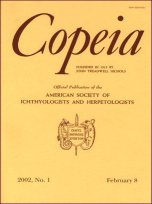Movement and activity patterns are important aspects of the ecology and conservation of any organism. Among turtles, data on the behavioral ecology of hatchling stages are lacking. To increase our knowledge of hatchling turtles, I tracked 20 hatchling gopher tortoises (Gopherus polyphemus) for up to 335 days after hatching to determine movement patterns, refugia use, microhabitat use, and home range size. Consistent with other studies, hatchling gopher tortoises moved infrequently and over very short distances through their first winter, a period during which they are presumably receiving energy from yolk stores. With the onset of warm spring weather, hatchling tortoises began to move more, most likely to obtain energy after depleting yolk stores. Refugia included both burrows and pallets (short holes in the ground), which were surrounded by a high percentage of ground cover (81.4%) and tall (>50 cm) vegetation. Home range size estimations depended heavily on the number of different locations recorded for each individual and varied from 0.0001–4.8 ha, depending on the method of calculation and longevity of the hatchling. Hatchlings moved infrequently, spent large amounts of time in burrows and under tall vegetation, and moved short distances while changing refugia. However, these data represent some of the largest home range sizes reported for G. polyphemus to date, suggesting that dispersal and the hatchling life stage are important behavioral aspects that, if neglected, may result in underestimating spatial requirements necessary to support all ecological aspects of this declining species.
How to translate text using browser tools
1 February 2006
Movement Patterns, Habitat Use, and Growth of Hatchling Tortoises, Gopherus polyphemus
David A. Pike
ACCESS THE FULL ARTICLE





